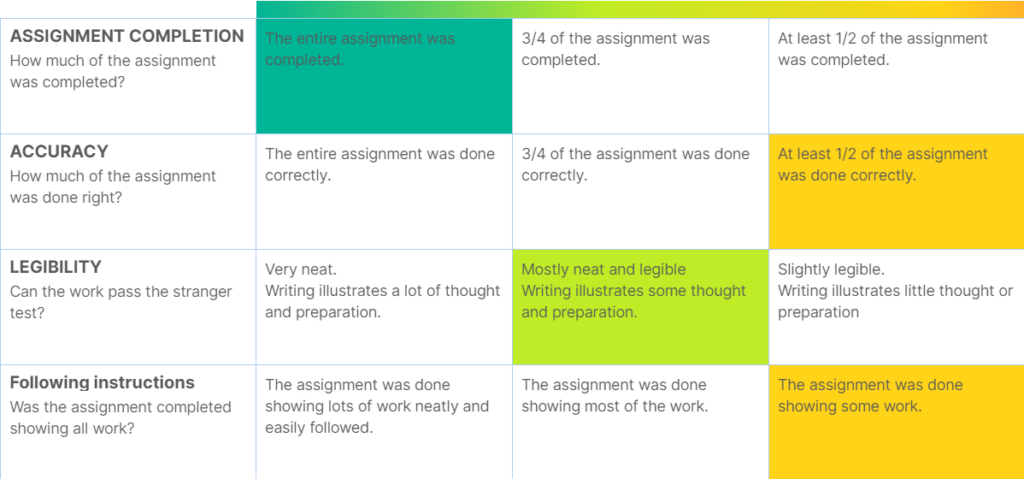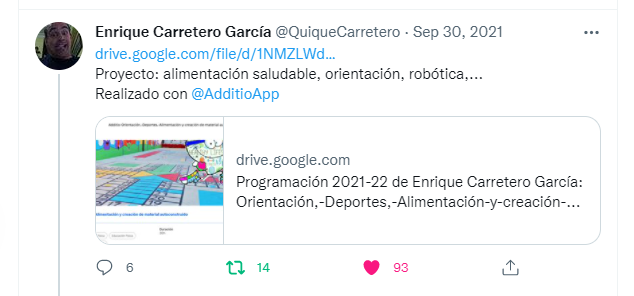Enrique is currently a Physical Education teacher at the Salesianos San Juan Bosco School in A Coruña, Spain, but he has worked in all kinds of subjects throughout his life in Pre-school and Primary education. As he mentions, he is passionate about ICT and innovation. That is why today we would like to talk to him so that he can tell us a little more about his work in the classroom and how he incorporates ICT into his day-to-day work.
What made you decide going into teaching? What do you like most about your job?
The decision of becoming a teacher has to do with how I saw my mother as a teacher: her dedication, hard work and the love she gave and received from her pupils. And although she always told us to do anything other than teaching, such was the passion she put into the profession she loved that in the end her three children became teachers.
There are many things that I love about this profession: seeing the students’ expressions when they learn something new; when they learn how to solve a problem that has cost them a lot and they are satisfied, the complicit smiles they give you,… those little details are perhaps the most rewarding in this profession.

We see that you have been working with ICT tools in your classes for a long time, what do you like the most about them and how did you discover Additio?
At first it was difficult for the pupils, as they were used to using ICT, but only to play, and it was difficult to make them see that it was a tool that could facilitate their work and help them learn to work in a team, in a cooperative way. But at the end of the process, I could see that both the results they obtained and, above all, the classroom climate, were substantially better than without using ICT.
I discovered Additio through one of my sisters because she used Additio on an individual level. One day she gave me her tablet to show it to me and I immediately saw that I could get a lot out of it. It must be said that the continuous improvements and the attention given to the suggestions made by the users was one of the reasons that made me choose Additio.
As a pre-school and primary school teacher, how do you organise your classes on a day-to-day basis? What do you always take into account when planning your classes?
Always at the beginning of the sessions we sit down and explain what is going to be done in today’s session, we play a game, we meet to give the necessary feedback or explain/modify those things that are needed, we carry out the next scheduled activity, and so on until the time to finish and collect all the material used in the sessions.
If the session is the first one of the DU or of the project we are carrying out, we explain the general lines of it, the way or ways in which we are going to evaluate it, the approximate days in which we will do the evaluation activities, … and we present the rubric or rubrics that we are going to use.
Something that I always take into account in the programmes is that they are never closed, that is, during the course I may discover, invent or find new material or activities that can help my students to better understand the content that I intend to transmit and that, being totally new, all students start on equal terms.

As we know, you have been using our platform for a long time and you are an Additio expert. What is your favourite Additio feature, the one you couldn’t live without?
For me, without a doubt, in the previous version it was the rubrics, as the same rubric can be used to evaluate several courses (for example, attitude or daily work), and you only had to mark in each row the standards of each course to which each item of the rubric was associated.
In the new version there is no doubt about the planner as you can have the whole DU in one place and linked directly to the objectives, contents, standards, competences or assessment criteria. All this work is in one place, it is accessible and exportable in a more logical way so that you can hand it in or share it with the school management in case someone has to replace you.

The tweet you published about the Didactic Units you have created in Additio was a success, with more than 90 likes and retweets, what do you like the most about them? How do you usually plan your units?
In the new version of Additio, it is perhaps one of the most useful tools. The best thing about this option is that at last you can have the units or projects written in the same place, with the same format, very complete and adaptable to each teacher and to what you may be asked for from the management or inspection.
As I explained before, the first thing to do is to decide what the units are going to be like: individual, connected to each other in some way, through a project, etc. The second thing is to select the objectives, the competences you are going to work on, and the standards or evaluation criteria and then select the tasks and within them the exercises or activities to be able to link everything later from the programming and monitoring section, so that everything matches.

Sharing class work through networks is a good way to help other teachers in the same situation. Do you think Additio could help more teachers to work with different resources together in some way?
For individual users, as in my case, a space should be created like the one that already exists for sharing rubrics (Edrubrics) and that allows for the sharing of programmes, as teachers at school level do have this option.

How do your students value being assessed using rubrics?
The truth is that they understand that it is the most objective way possible, the way I create the rubrics and that they have “the last word” on the items that make up the rubric and they are very clear about what is intended with the exercise that is used to evaluate or with the series of exercises that are used during the DU or project and with which they are going to be evaluated.
During this time of pandemic, what is making it most difficult for students to learn?
Perhaps what is most hindering student learning is that in many subjects we had to take a step backwards (returning to traditional methodologies) and abandon many methodologies that greatly facilitated not only learning tasks, but also improved the classroom climate, made it easier for all students to participate, worked on aspects of emotional improvement (teamwork, cooperative work, …).
In the case of my subject, Physical Education, we have perhaps been lucky enough to be able to plan many activities that are relatively similar to those that were done before the pandemic, implementing thorough cleaning of materials, masks and stable subgroups throughout the year in the classroom in case a positive situation arose.



